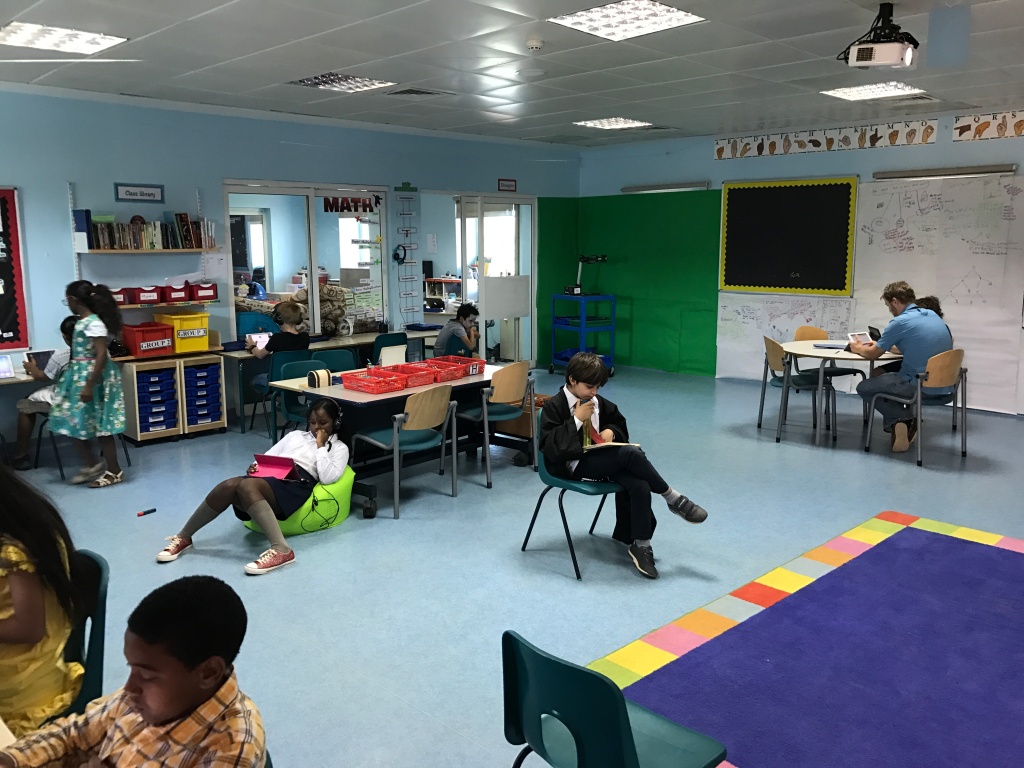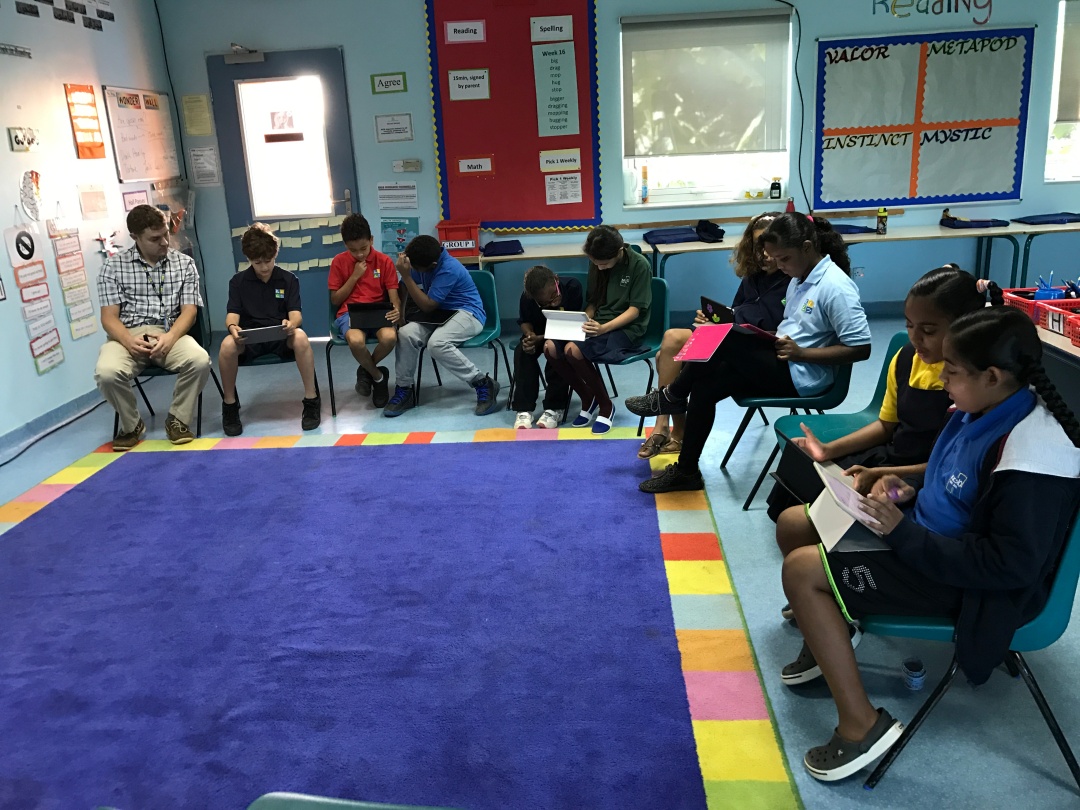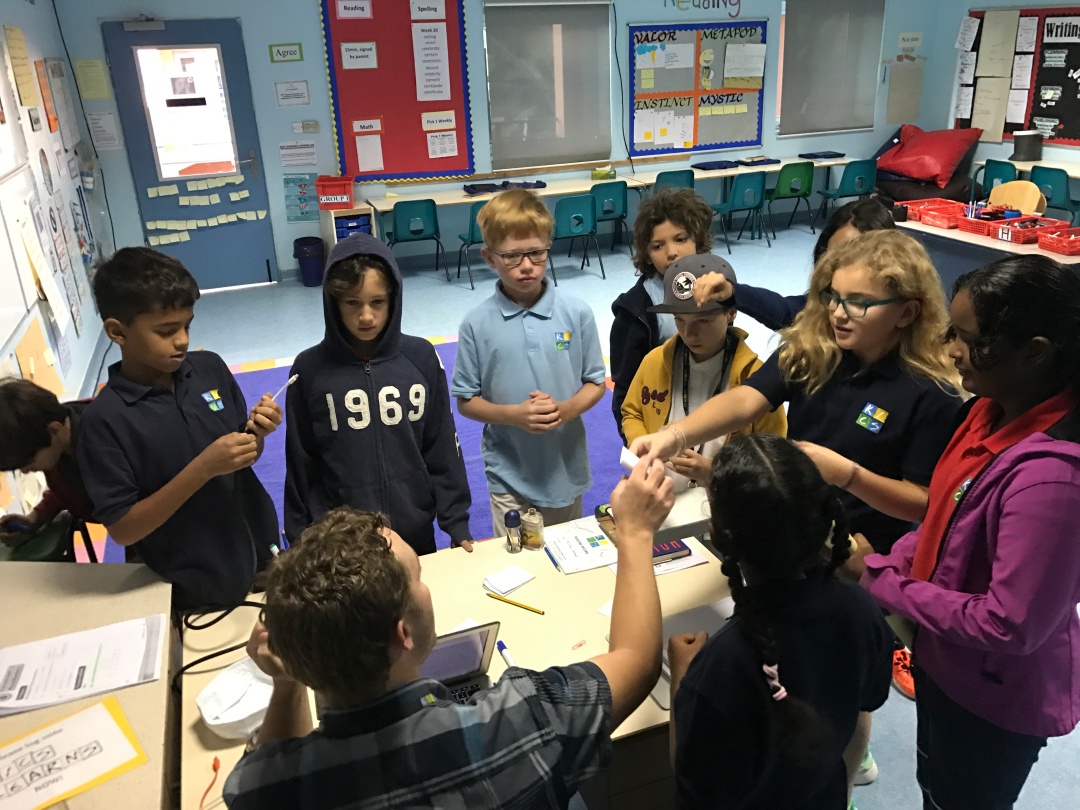When I was just a first year teacher, I placed a lot of value on my ability to control student behaviors. While students were quiet and well-behaved to the passing observer, I could sense that I was not facilitating the kind of learning experiences that I wanted from my teachers during my own education. The relationship between the teacher, the students, and the learning was traditional and strained, and everyday felt like a battle for points and rewards. I felt like I was part drill sergeant, part cheerleader, part disciplinarian, but not at all a teacher.
As my teaching became more and more inquiry based, and more and more student-focused instead of teacher-driven, I began to see that the increased trust that I had for my students did not result in a dramatic increase in unwanted behaviors. In fact, quite the opposite. This year, for the first time, I felt that I had finally built up the structure necessary to facilitate a Week of Free Inquiry, aka a Week Without Walls, or, as my students put it, “College”. For the first time in my career, I had to give up control of movement and control of content as students pursued their own interests wherever and whenever they wanted. Here’s how I did it:
Related: 5 Ways to Give Your Class Back to Your Students
I Organized a Legit Online Learning Environment
When I say legit, I mean legit. There’s no way that you are going to get students to perform at the highest levels in a wall-less physical environment without a dynamic and organized online environment. When my students started the week, they knew how to contact me (e-mail, instant messaging, commenting on assignments) and they knew where and when to find me (in the cafeteria, by online appointment). For weeks I had to build up a wealth of knowledge and skill surrounding the apps on their devices, and I had to foster IT-specific problem-solving skills so that students were able to figure out their IT issues on their own.

I am sure that any robust LMS could be used for a project like this, but I used my class Moodle page (See Moodle in elementary), and students were working on their own school issued iPad throughout the week. Assignments were turned in for review onto their online portfolio (we use Seesaw) and students had their own e-mail addresses. I wish that I had added instant messaging, like WhatsApp or something, to their iPads before the week began, but we communicated fine with just e-mail, Seesaw (see Using Seesaw to Teach Social Media), and the class chat activity on Moodle.
Students Put Together a Game Plan

As the above sketchnote by @trev_mackenzie suggests, there is indeed a lot of autonomy and independence that comes from true free inquiry. However, even in the illustration we see that there isn’t total, complete freedom. To continue with the pool analogy, the above students may have increased freedom of movement, but they do have to remain in the pool at all times; they are not free to leave the complex without permission. Similarly, they are not allowed to make choices that put others’ safety at risk, or ruin the experience for themselves or others. At all times there is a “guide on the side”, but this guide is much more hands-off than during Guided Inquiry.

To structure the inquiry I used both of these sketchnotes by @trev_mackenzie. The goal setting (#4) and the calendar (#6) were particularly important in organizing the project.
As students neared their final days of preparation, I had a litany of questions from students to go through, but the main question that kept coming up from my 10 year olds was: Can we do whatever we want?
I tried to answer this question about the same way every time: This school is a learning space. You can learn whatever you want, however you want, and with whom you want, but you may not choose NO learning. You may take a break whenever you want, but in the end, this project is all about what we can accomplish in one week when we put our minds to it. I think you’ll realize quickly that you’ll need and want every minute that you are given during this special week.
I Started the Year with a Plan for Gradual Release of Responsibility
There’s no way that a form of learning like this can be possible the first day of school. There are a lot of discussions, mini-lessons and student reflections about how we learn that must take place before a class is ready to embark on a solo journey of this magnitude. Gradual release does ultimately mean giving up the responsibility to the students. I knew my class was ready to take on this project when I felt that they had proven mastery of certain skills at least a few times before in a variety of guided inquiry sequences.

You also have to accept that some students may take longer during the year to get to a point of independence where they will get anything out of a week of free inquiry. For those students, I put them with partners that I knew I could trust to move them along, and I checked in on them more frequently than I did other students. I tried to make sure that their failures at the end were limited to the product rather than the process, i.e. a bad final project, but abundant learning nonetheless.
I Proceeded with the Mantra of “Never Work Harder than Your Students”
After taking attending a workshop at the 2016 Africa Ed Conference in Johannesburg, South Africa by Karen Boyes called Never Work Harder Than Your Students, Let Them Do the Thinking, I began to see how the onus has to be on the student to take responsibility for their learning. When my teaching was teacher-directed, I was doing all of the work, and the students were merely passive consumers of information.

After the workshop, I was very clear with my students about my new expectations: I should never be working harder than any of you! And if I am, then you’re not doing your job right and I’m not doing my job right. This idea of never working harder than your students was critical when I began the Week of Free Inquiry because I had to come to grips with what it meant to release all responsibility to the students as I sat back with a cup of coffee while waiting for my next appointment with a student group.
I Trusted and They Pulled Through

In the end of the day, building relationships with students to make them better people is why I became a teacher. I wouldn’t expect a teacher that feels differently and puts less of a value on relationship building to be able to pull off the Week of Free Inquiry. It takes really getting to know your students’ strengths and weaknesses, and really building a culture of trust and a love of learning. Because I trusted them, and they respect me to the point that they will go to the ends of the earth to impress me, they were able to accomplish amazing things during this highly unstructured time.
What do you think? Could your kids pull off a Week of Free Inquiry? Are you ready to tear down the walls and let them be free? Be sure to follow me on Twitter and check out @SGroshell’s Teachers Pay Teachers account.





Wow! So inspired. Can you guide me a little more through this idea? Did the free inquiry take place around the unit you were doing in the class or anything else the children wanted to pick up ?
This was such a wonderful read. Thank you.
LikeLiked by 1 person
It’s interesting – since the post I’ve done both (for the unit and also standalone). I’ve also done a laissez-faire day as part of a unit about leadership styles and learning styles, where students were literally given zero instructions about what to do and how to do it.
LikeLike
The main thing is getting their stuff into backpacks – headphones, ipads, materials – and guiding them through safe areas in the building where learning can happen easily, i.e. the Library, study halls, testing rooms, nice outdoor areas etc, and letting them get to work.
LikeLike
Where’s the rest of the class?
LikeLiked by 1 person
My whole class participated in the activity, and they spent their time either in my room if they wished or in one of our agreed upon places that had supervision e.g. the library
LikeLike
Thanks for commenting 🙂
LikeLike
Awesome idea
LikeLiked by 1 person
Thank you!
LikeLike